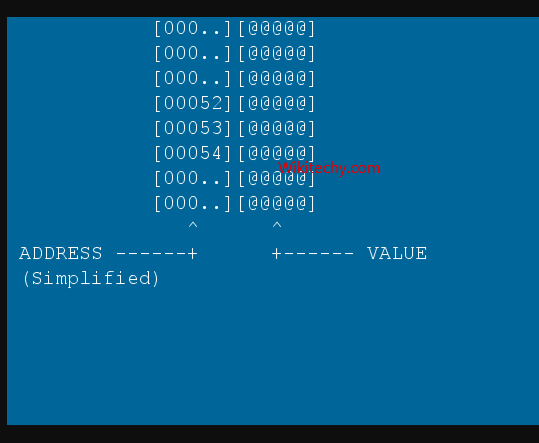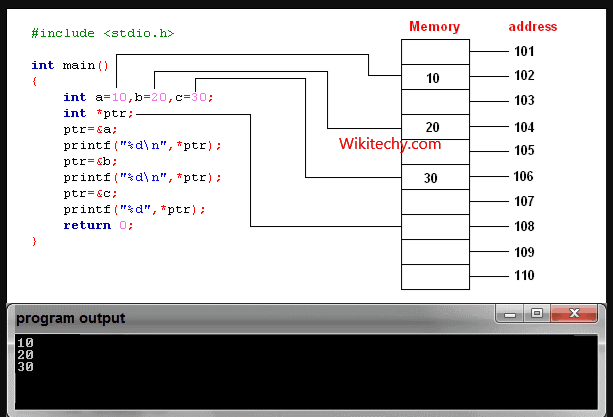Pointer to Structure | C++ Pointers to Structure - Learn C++ - C++ Tutorial - C++ programming

Learn c++ - c++ tutorial - c++-pointers-to-structure - c++ examples - c++ programs
What is Pointers in C++
- A pointer is a variable that holds a memory address. This address is the location of another object (typically, a variable) in memory. That is, if one variable contains the address of another variable, the first variable is said to point to the second.
- A pointer declaration consists of a base type, an *, and the variable name.
- The general form of declaring a pointer variable is:

learn c++ tutorials - pointers in c++ Example
- type *name;
- The 'type' is the base type of the pointer and may be any valid type.
- The 'name' is the name of pointer variable.
- The base type of the pointer defines what type of variables the pointer can point to.
- A pointer variable can be created not only for native types like (int, float, double etc.) but they can also be created for user defined types like structure.
- If you do not know what pointers are, visit C++ pointers.
- Here is how you can create pointer for structures:

learn c++ tutorials - pointers in c++ Example
#include <iostream>
using namespace std;
struct temp {
int i;
float f;
};
int main() {
temp *ptr;
return 0;
}
- This program creates a pointer ptr of type structure temp.
Learn C++ , C++ Tutorial , C++ programming - C++ Language -Cplusplus
Example: Pointers to Structure
#include <iostream>
using namespace std;
struct Distance
{
int feet;
float inch;
};
int main()
{
Distance *ptr, d;
ptr = &d;
cout << "Enter feet: ";
cin >> (*ptr).feet;
cout << "Enter inch: ";
cin >> (*ptr).inch;
cout << "Displaying information." << endl;
cout << "Distance = " << (*ptr).feet << " feet " << (*ptr).inch << " inches";
return 0;
}Output
Enter feet: 4
Enter inch: 3.5
Displaying information.
Distance = 4 feet 3.5 inches
- In this program, a pointer variable ptr and normal variable d of type structure Distance is defined.
- The address of variable d is stored to pointer variable, that is, ptr is pointing to variabled. Then, the member function of variable d is accessed using pointer.
- Note: Since pointer ptr is pointing to variable d in this program, (*ptr).inch and d.inch is exact same cell. Similarly, (*ptr).feet and d.feet is exact same cell.
- The syntax to access member function using pointer is ugly and there is alternative notation-> which is more common.
ptr->feet is same as (*ptr).feet
ptr->inch is same as (*ptr).inch
